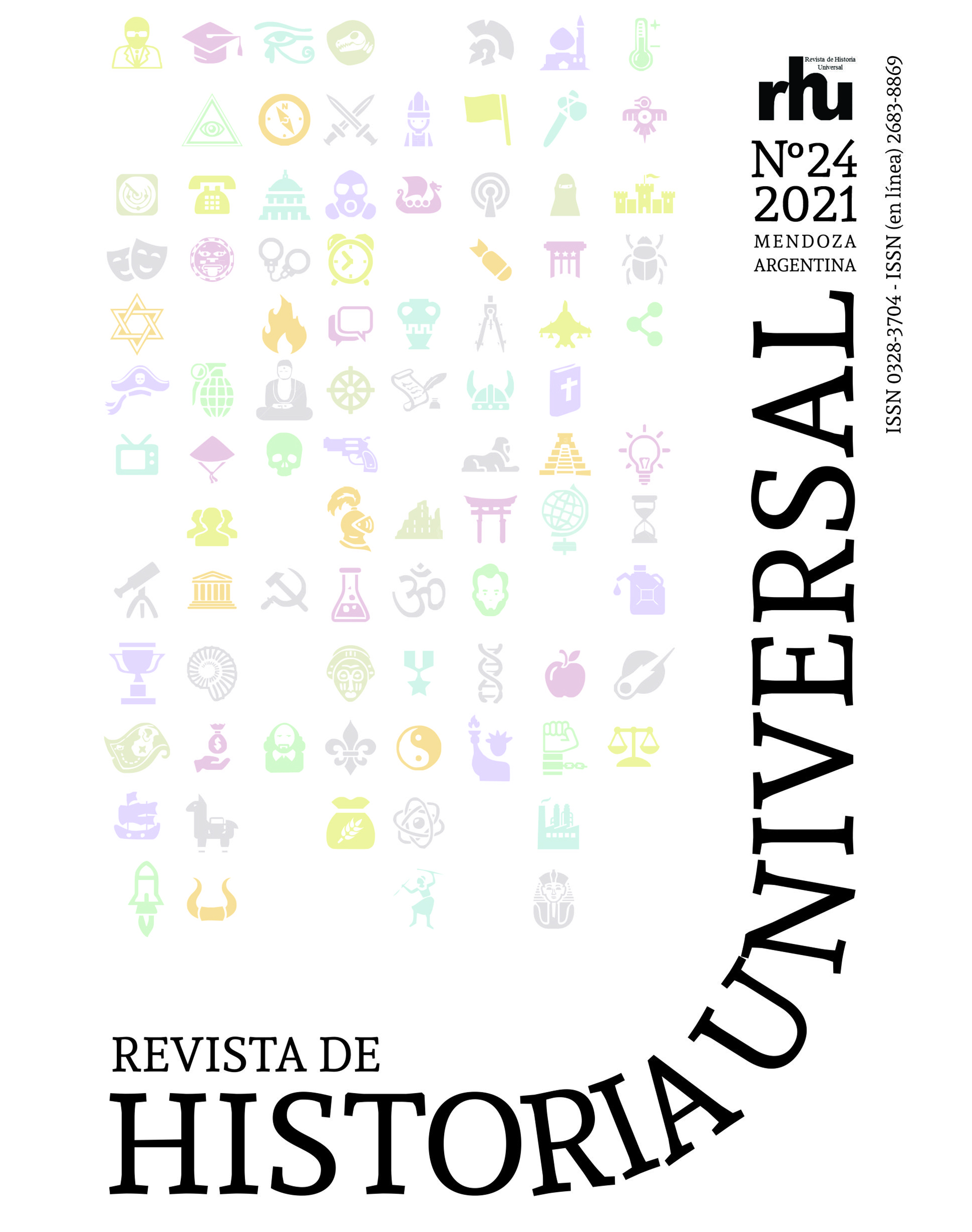The Sacred Man and the Mythical Beast; the ritual jades of the Liangzhu elite
Keywords:
Chinese Neolithic, Liangzhu Culture, Ritual jades, ArchaeologyAbstract
The Liangzhu culture has established itself as one of the most important Neolithic cultures of China due to the excavation of several elite tombs and the recent discoveries inside of the now recognised “Ancient City of Liangzhu”. This paper introduces the Liangzhu culture and one of the fundamental aspects of it; its ritual jade usage. The nucleus of the ritual jades of Liangzhu consisted of four specific elements: the cong tubes, the bi discs, the yue axes and the sacred icon also known as the “Sacred Man and the Mythical Beast”. These elements were not static but suffered several transformations during the thousand years of the development of the Liangzhu culture.
References
Chang, K.C. (1986). Art, myth and ritual: the path to political authority in China. Cambridge: Cambridge University Press.
Chang, K.C. (1989). An essay on Cong. Orientations 20 (6): 7-43.
Comisión Municipal de Bienes Culturales de la Ciudad de Shanghai (2000). Fuquanshan: Xin shiqi shidai yizhi fajue baogao [Fuquanshan: Reporte de excavación del sitio arqueológico del Neolítico]. Beijing: Wenwu Chubanshe.
Fang Xiangming (2013). Shenren shoumian zhenxiang [La verdadera imagen de hombre divino y el rostro de la bestia]. Hangzhou: Hangzhou Chubanshe.
Fang Xiangming (2019a). Liangzhu yuqi xianhui [Ilustraciones de los jades Liangzhu]. Hangzhou: Zhejiang Guji Chubanshe.
Fang Xiangming (2019b). Fanshan da cong ji Liangzhu cong xiangguan wenti [Interrogantes en relación al gran tubo cong de Fanshan y los tubos cong Liangzhu]. Dongfang Wenwu 4: 1-17
Fang Xiangming (2020). A controlled fine craft. Jade production techniques in the Liangzhu Culture. En Liu Bin, Qin Ling y Zhuang Jie (Eds). Liangzhu Culture society, belief, and art in Neolithic China (115-164) ). Nueva York: Routledge
Garcia Rubio de Ycaza, Tansis Darien (2020). Cong kaogu jiaodu dui “yuqi shidai” gainian jinxing chubu pingjia- jiyu Changjiang liuyu xinshiqi shidai wanqi wenhua (A preliminary evaluation of the term Jade Age from an archaeological perspective: based on the Late Neolithic archaeological remains of the Yangtze River Region). (Tesis de Maestría) Hangzhou: Zhejiang University.
He Nu (2021). Liangzhu wenhua yucong suo yunhan de yuzhouguan yu chuanshi guannian—guojia shehui xiangzheng tuxing fuhao xitong kaogu yanjiu zhi Er [La cosmovision y el concepto de origen del mundo contenidos dentro de los tubos cong de la cultura Liangzhu – Segundo estudio arqueológico del sistema de símbolos gráficos de la sociedad estatal]. Dongfang Wenwu 4
Inomata, T. (2001). The power and ideology of artistic creation: Elite craft specialists in Classic Maya Society. Current Anthropology, 42(3), 321–349.
Instituto de Arqueología y Bienes Culturales de la Provincia de Zhejiang (2005). Liangzhu yizhiqun kaogu baogao zhi er: Fanshan [Segundo reporte arqueológico del conjunto de sitios de Liangzhu: Fanshan]. Beijing: Wenwu Chubanshe.
Jiang Weidong (2013). Yuqi de gushi [Una historia de jades]. Hangzhou: Hangzhou Chubanshe.
Li Xinwei (2021). Liangzhu wenhua “Shenren whoumian” tuxiang de neihan ji yanbian [El significado y evolución de la imagen del “hombre divino y el rostro de la bestia” de la cultura Liangzhu]. Wenwu 6: 51-61.
Liu Bin (2013). Shenwu de shijie [El mundo de los chamanes sagrados]. Hangzhou: Hangzhou Chubanshe.
Liu Bin (2019). Faqi yu wangquan Liangzhu wenhua yuqi [Herramientas rituales y poder Real. Los jades de la cultura Liangzhu]. Hangzhou: Zhejiang Daxue Chubanshe.
Liu Bin & Zhu Xuefei (2019). Chengjiao de guanxiangtai yu guizu mudi [Los observatorios y cementerios de nobles a las afueras de la ciudad]. En Instituto de Arqueología y Bienes Culturales de la Provincia de
Zhejiang (Ed) Gucheng Zonghe Yanjiu Baogao [Reporte Completo de las Investigaciones de la Ciudad Antigua de Liangzhu]. (pp. 236-269). Beijing: Wenwu Chubanshe.
Mou Yongkang (1997). An archaeological investigation into the functions of the jade bi and cong. En Rosemary E. Scott (Ed). Chinese Jades. (63-75) London: School of Oriental and African Studies, University of London.
Qin Ling (2020). Power and belief. Reading the Liangzhu jade and society. En Liu Bin, Qin Ling y Zhuang Jie (Eds). Liangzhu Culture society, belief, and art in Neolithic China (49-114). Nueva York: Routledge
Renfrew, Colin & Bin Liu (2018). The emergence of complex society in China: The case of Liangzhu. Antiquity 92(364): 975-990.
Wang Ningyuan (2019). Liangzhu gucheng waiwei de shuili gongcheng [El sistema hidráulico de la periferia de la Ciudad Antigua de Liangzhu] En Instituto de Arqueología y Bienes Culturales de la Provincia de Zhejiang (Ed) Gucheng zonghe yanjiu baogao [Reporte completo de las investigaciones de la Ciudad Antigua de Liangzhu]. (pp. 270-285). Beijing: Wenwu Chubanshe.
Wang Zunguo, Li Wenming & Qian Feng (1984). 1982 nian jiangsu changzhou wujin Sidun yizhi de fajue [La excavación del sitio arqueológico de Sidun en Wujin, Changzhou, Jiangsu]. Kaogu 2: 109-129
Wiesheu, W. M., & García Rubio de Ycaza, T. D. (2021). El mundo simbólico de los jades Liangzhu en China. Cuicuilco Revista De Ciencias Antropológicas 28(81), 151–186.
Xia Nai (1983) Handai de yuqi- Handai yuqi zhong chuantong de yanxu yu bianhua [Los jades del periodo Han- Continuidades y cambios dentro de la tradición del jade del periodo Han]. Kaogu Xuebao 2: 125-145.
Zhao Dachuan & Shi Shiying (2013). Liangzhu wenhua faxian ren Shi Xingeng [El descubridor de la cultura Liangzhu: Shi Xingeng], Hangzhou: Hangzhou Chubanshe.
Zhu Xuefei (2019). Shen wang zhi guo Liangzhu gucheng yizhi [Un reino de reyes y dioses. La Ciudad Antigua de Liangzhu]. Hangzhou: Zhejiang Daxue Chubanshe.









